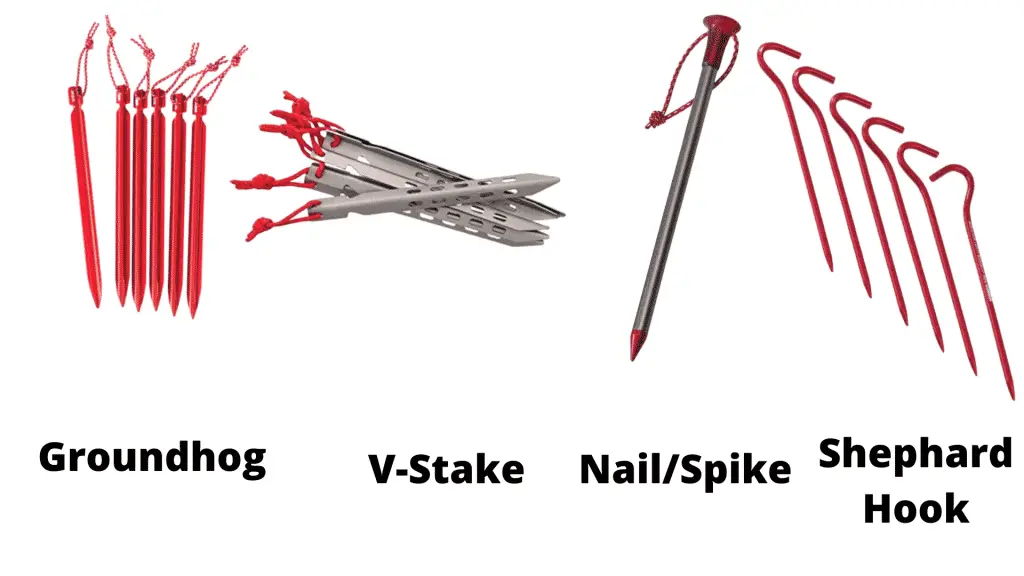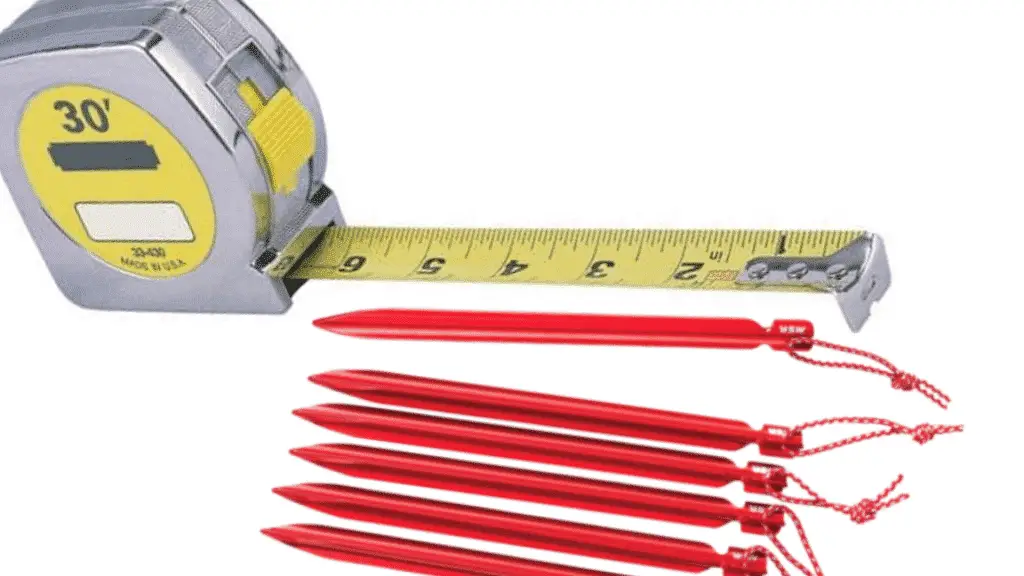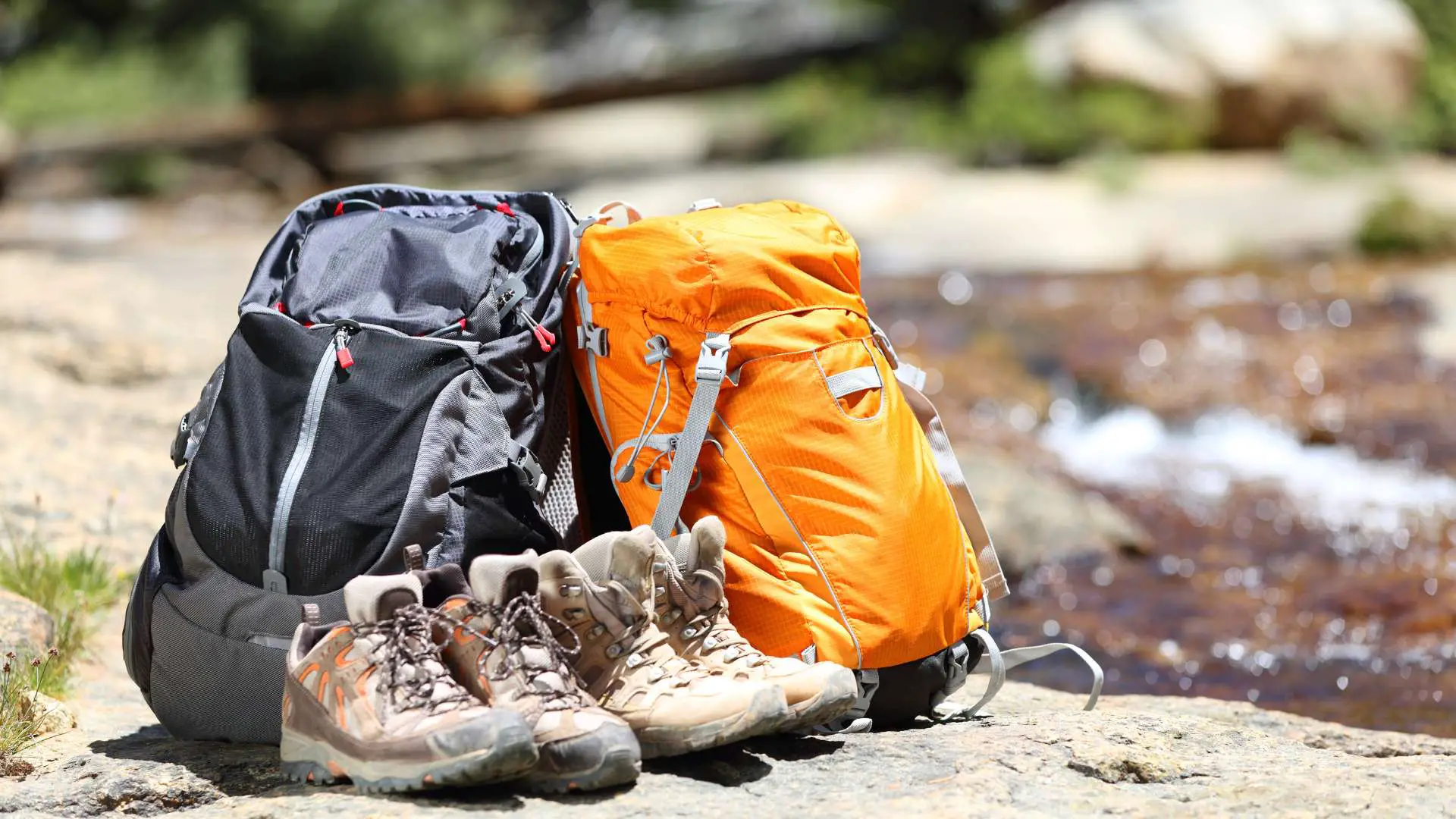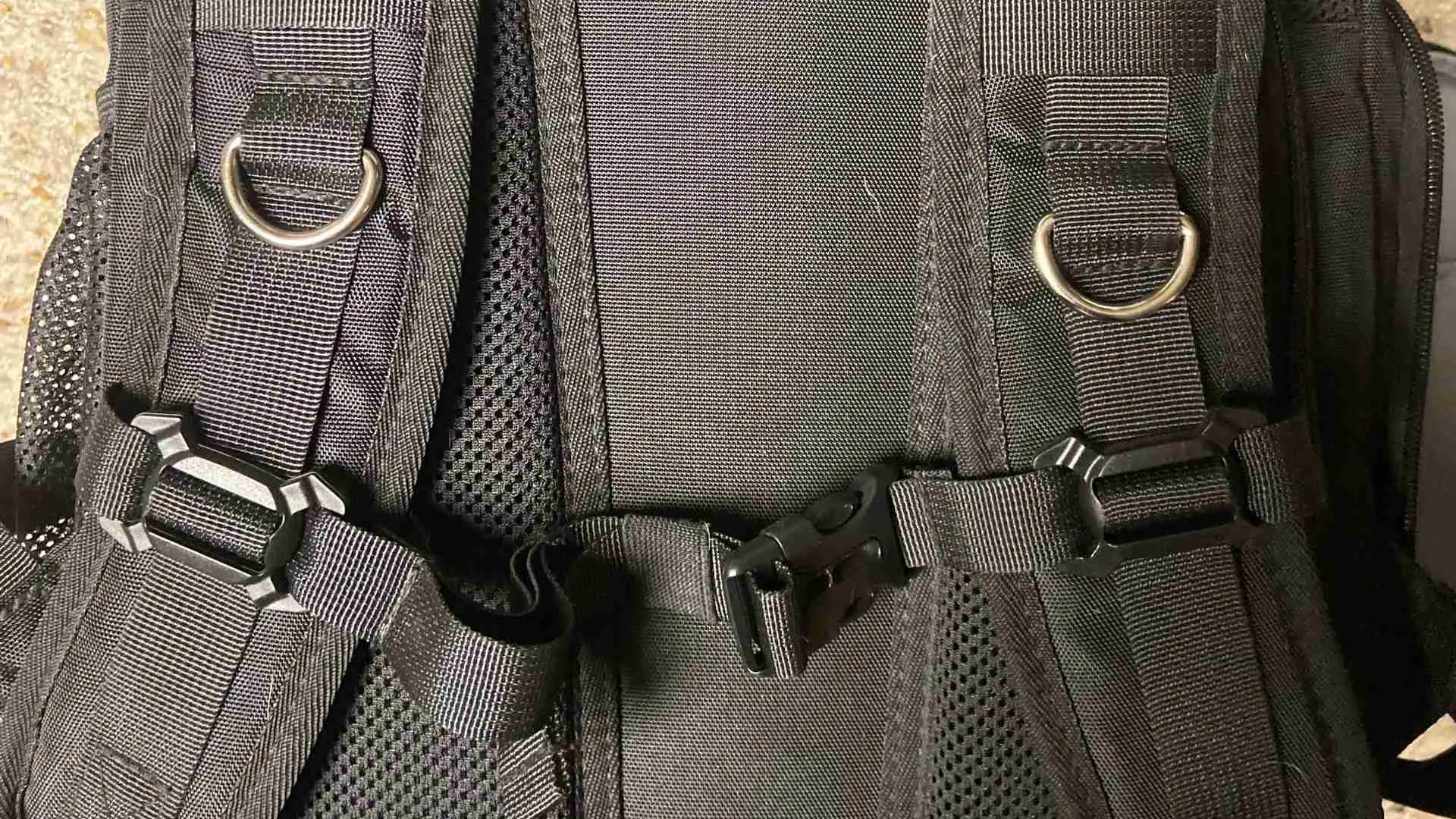Driving tent stakes into hard ground can be a serious challenge. You never know how hard it will be to drive in a stake. Sometimes things just don’t go to plan and you end up with a bent peg. Don’t worry! There are stakes designed to be used in hard soil.
What are the best tent pegs for hard ground? There are two basic options when driving stakes into hard ground. Would you rather have a lightweight or extremely durable tent stakes? Go with a Nail/Spike or shephard stake to save weight or Y-Beam for increased durability.
I would personally go with the MSR Groundhog Y-Beam style tent stake. It works in a wide variety of soil types (not good in sand) making it by far the most versatile tent stake currently available.
The modest price tag, extremely durable design, and lightweight profile (.43oz) makes the Groundhog hard to beat. Just remember that what works for 99% of campers might not be the best solution for you.
In the rest of this article I’ll go over a few other styles that might be a better choice for you. I’ve found that a combination of stakes is better than sticking to 1 simple solution.
Table Of Contents
A Few of My Favorite Tent Stakes For Hard Ground
- MSR Groundhog:
- MSR Groundhog Mini:
- MSR Carbon Core Nail:
- Vargo Titanium Shephards Hook:
- Cheap Steel Stakes: There’s a reason why every tent comes with cheap heavy-duty steel stakes. They work in just about any type of soil from hard compact dirt to loose sand. A nice set of Coleman steel tent stakes is all most campers need. Just don’t expect to use these for backpacking since they weigh close to 1lb each.
The Best Tent Stakes For Hard Ground

There are two main trains of though when trying to pound stakes into hard ground. You can go with either a thin stake to reduce friction or heavy duty peg to pound through hard compressed ground. Both options have their advantages and disadvantages depending on your needs.
I would say that 99% of backpackers and campers should go with the MSR Groundhog Tent Stake. It’s by far the most durable tent stake on the market. It’s extremely durable and offers the most holding power than any other stake currently available.
The chart below shows the holding power of the most popular stakes on the market. It boils down to choosing between durability and reduced weight. Any Y-Beam, Titanium Shephard Hook, or Nail/spike (with reinforced head) will work.
| Tent Stake and Style | Tent Stake Length | Tent Stake Weight | Holding Power Range (lb) |
|---|---|---|---|
| MSR Groundhog Mini (Y-Beam) | 6″ | .35oz | 40-50lb |
| MSR Groundhog (Y-Beam) | 7.5″ | .43oz | 60-70lb |
| MSR Carbon Core Nail Stake | 6″ | .19oz | 32-40lb |
| Vargo Titanium V-Stake | 6.25″ | .38oz | 25*-55lb (Bad in Compacted Soil) |
| MSR Aluminum Shephard Hook | 6.75″ | .45oz | 25-35lb |
| Toaks Titanium Shephard Hook | 6.5″ | .23oz | 23-35lb |
| Vargo Titanium Shephard Hook | 6″ | .32oz | 20-30lb |
| Cheap Plastic Peg | 6″ | .40oz | 0-20lb (Couldn’t get it in Compacted Soil) |
Would you rather have extra holding power? Go with the MSR Groundhog. Do you want lightest stake you can find for backpacking? Go with a MSR Carbon Core Nail or Titanium Shephard Hooks (Aluminum Bends).
1) Y-Beams aka Groundhog

Look at the chart above and you instantly see why the MSR Groundhog (pictured above) is so popular. It’s a compact 6″ stake that weighs .43 oz and offers almost twice the holding power of every other model. This is the stake I recommend for 99% of campers/backpackers regardless of the soil type (except sand).
MSR is currently the only manufacturer of Y-Beam style tent stakes. REI used to make another version, but they quit making it for some reason. I don’t know why they stopped making them (probably patent laws).
For the price you really can’t beat the MSR Groundhog. It’s extremely durable and works in every soil type. If you hit a rock, just keep on driving through without worrying about bending the stake. That’s what I call durable!
Ultralight backpackers might want to use a nails/spikes or shephard hooks to save some weight, but that’s usually not necessary. Two packs of Orbit Chewing Gum weigh more than my entire set of Groundhog stakes. The groundhog mini is a great choice if you want to save a fraction of 1oz.
Obviously, shaving off every oz helps a little bit, but not by much. At some point ultralight backpackers are cutting pack weight solely for bragging rights.
2) Nails and Spikes

Nails and Spikes are by far the lightest tent stakes on the market. I’ve tried lots of different nails over the years and I’ve been generally disappointed. They all have a structural weak point at the head which will eventually bend/break.
The MSR Carbon Core Nail is the only one that will last in hard ground. Look at how the head is reinforced compared to the Vargo Nail on the right. Nails will almost always bend where the rope runs through the head (it needs to be reinforced).
Nail style tent stakes aren’t all that strong, but they’re light and thin. So they can pierce right through hard ground and work around rocks. Just be careful when pounding into rocky terrain. You don’t want to accidentally bend/break the stake.
3) Shephard Hooks (Titanium Only)
Shephard hooks work much like nails. They’re thin, light and easily pierce through compacted dirt. Titanium shephard hooks offer more durability than nails, but they’re heavier and expensive.
You can’t cheap out when buying shephard hooks. Aluminum hooks just aren’t strong enough to pierce through hard ground. The tips and main shaft usually ends up bending the second you start pounding into hard surfaces.
Go with titanium hooks instead of aluminum. Titanium is much stronger/lighter than aluminum and much less likely to bend. The only problem is they’re very expensive.
These are definitely useful, but go with the MSR Groundhog if you can only afford 1 set of stakes. Titanium shephard hooks are strong, but they will eventually bend under stress.
4) Cheap Steel Tent Stakes

Backpackers should never use steel tent stakes. They’re way too heavy to carry around in a pack all day. Everybody else can get away with any old steel tent stake.
It’s hard to beat the holding power of cheap Coleman 12 inch steel tent stakes. They’re seriously strong and twice the length of traditional backpacking stakes. All that length adds extra holding power.
However, it will be harder to drive a 12 inch stake into hard rocky ground. You will need a mallet or some type of hammer. Don’t even bother hammering these in with a rock. You’ll end up hurting yourself.
Don’t Use V-Style Stakes!
V-Style stakes work great in loose soil/sand, but they’re terrible in hard compacted soil. Most of the holding power comes from loose dirt filling in the grooves on the stake. That just won’t happen in hard soil.
When I tested my Vargo V-Style stakes the holding power was all over the place. I performed a makeshift holding power test using an archery draw weight scale. The V-Style stakes consistently under performed in compacted dirt (I’m not a scientist).
Why Not Use a Combination of Tent Stakes in Hard Ground?
There’s no reason why you can’t use 2 different style stakes. I usually carry a combination of MSR Groundhogs and MSR Carbon Core Nails. The groundhogs work as the main anchor points and the nails add further stability.
This type of setup allows me to slightly reduce my packs baseweight without sacrificing holding power. I start off using the nails and switch over to the groundhogs if those are hard to get in. You can really pound on the MSR Groundhogs so they can go just about anywher.
Getting Stakes Into Hard Ground
Getting stakes into hard ground isn’t all that difficult. You will just need to carry some type of lightweight mallet/hammer. My Coleman Rubber Mallet only weighs 5.3oz and it was ridiculously cheap. All the other “PREMIUM” mallets weigh too much for backpacking.
Length Matters

How long should tent stakes be? It really depends on how much weight you’re willing to carry.
Compact ground offers less holding power than moist loose soil. It just doesn’t have enough give to effectively grab onto the stake.
Longer stakes will offer more holding power than shorter ones. Try to find stakes that are at least 6+ inches. Just remember that longer stakes will usually be heavy.
What About Rocky Soil?
Rocky soil is a little bit different than compacted soil, but you should look at it the same way. It’s hard to say whether or not you’ll be able to drive tent stakes into rocky ground.
Depends on the size of the rocks and durability of your stake. You can usually drive through small rocks, but you’ll have to work around bigger ones.
For more info check out my post on driving tent stakes into rocky soil. It has more detailed info on driving tent stakes through and working around rocks.


